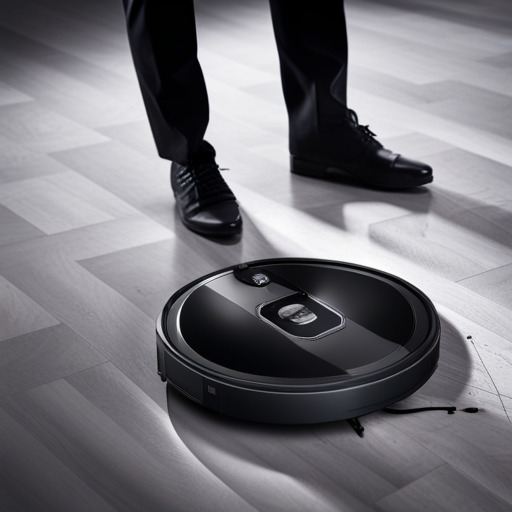Is your robot vacuum not performing as expected? Are you frustrated with its lackluster performance or apparent malfunction? In this blog post, we will delve into the common reasons why your robot vacuum may not be working properly, and provide practical solutions to help you get it back on track.
You might be wondering why your robot vacuum keeps getting stuck, why it’s not picking up debris effectively, or why it’s not charging properly. These are all valid concerns that many robot vacuum owners face, and we’re here to shed light on these issues. We’ll explore various factors that can impede your robot vacuum’s performance, such as tangled brushes, dirty sensors, or battery issues.
By the end of this post, you’ll have a clearer understanding of what could be causing your robot vacuum to underperform, and you’ll be equipped with the knowledge to troubleshoot and resolve these issues effectively. So, let’s dive in and uncover the common reasons behind your robot vacuum’s subpar performance.
Robot Vacuum Not Turning On: Troubleshooting Tips
Is your robot vacuum refusing to power up? First, check if it’s properly plugged in and the power outlet is functioning. If the vacuum still won’t turn on, try resetting it by turning it off, unplugging it, and waiting for a few minutes before plugging it back in and turning it on again.
Another potential reason for the vacuum not turning on could be a depleted or faulty battery. Ensure that the battery is fully charged or consider replacing it if it’s old or no longer holding a charge. If the battery seems fine, inspect the power switch for any damage or debris that could be preventing it from functioning properly.
In some cases, the problem might lie with the charging dock. Make sure the contacts on the vacuum and the docking station are clean and free from obstructions. Additionally, verify that the charging station is plugged in and receiving power.
If all else fails, it’s worth checking the user manual for any specific troubleshooting steps recommended by the manufacturer. If the issue persists, contacting customer support for further assistance may be necessary.
Common Issues with Robot Vacuum Sensors
Robot vacuum sensors can encounter various issues that affect their performance. One common issue is the sensors getting dirty, which can lead to inaccurate readings and navigation problems. Another issue is sensor malfunctions, where the sensors fail to detect obstacles or cliffs, impacting the vacuum’s ability to maneuver safely.

Understanding and Fixing Suction Problems
Is your robot vacuum not picking up dirt and debris as effectively as it used to? One common issue that can cause this is a loss of suction power.
This can be caused by a variety of factors, including clogged filters, a full dustbin, or a worn-out brush roll. Ensuring that the vacuum’s filters are clean and unclogged is essential for maintaining optimal suction power.
Regularly emptying the dustbin and cleaning the brush roll can also help prevent suction issues. Additionally, checking for any obstructions in the vacuum’s airflow path, such as tangled hair or debris, can improve its overall suction performance.
By addressing these common issues, you can help restore your robot vacuum’s suction power and ensure that it continues to clean your home effectively.
Maximizing Battery Life and Performance
One of the key factors in ensuring your robot vacuum works effectively is optimizing its battery life and performance.
To maximize battery life, it’s important to follow the manufacturer’s guidelines for charging and discharging the battery. Overcharging or letting the battery fully discharge can negatively impact its longevity and performance. By adhering to the recommended charging practices, you can extend the overall lifespan of the battery.
Another way to optimize your robot vacuum’s battery life is by keeping the unit clean and well-maintained.
Regularly cleaning the vacuum’s brushes, filter, and sensors can reduce its workload, leading to more efficient battery usage. Additionally, ensuring that the vacuum’s wheels move freely and aren’t obstructed can help minimize strain on the battery.
In addition to maintenance, being mindful of the cleaning schedule can contribute to better battery performance.
Scheduling shorter, more frequent cleaning sessions can prevent the vacuum from expending excessive energy during prolonged cleaning cycles. This approach can help the vacuum operate more efficiently while conserving battery power.
Moreover, optimizing the cleaning area can impact the battery life and performance of your robot vacuum.
Reducing clutter and removing obstacles from the cleaning path can help the vacuum complete its cleaning tasks more efficiently, thus preserving battery power. Creating a clear and unobstructed environment for the robot vacuum can lead to improved overall performance.
Furthermore, consider the placement of the charging station to enhance battery life and performance.
Positioning the charging dock in a central location with easy access for the robot vacuum can facilitate seamless recharging. This ensures that the vacuum can return to the dock and recharge as needed, maintaining optimal battery performance.
By implementing these strategies, you can effectively maximize the battery life and performance of your robot vacuum.
Taking proactive steps to maintain the battery, optimize cleaning schedules, and create an ideal cleaning environment can lead to improved efficiency and longevity for your robot vacuum.
Conclusion
In conclusion, understanding the common reasons why your robot vacuum may not be working properly can help you troubleshoot and resolve issues effectively. By identifying problems with the power supply, sensors, suction, and battery, you can ensure that your robot vacuum operates at its best. Regular maintenance, proper usage, and timely troubleshooting are essential for maximizing the performance and longevity of your robot vacuum.

